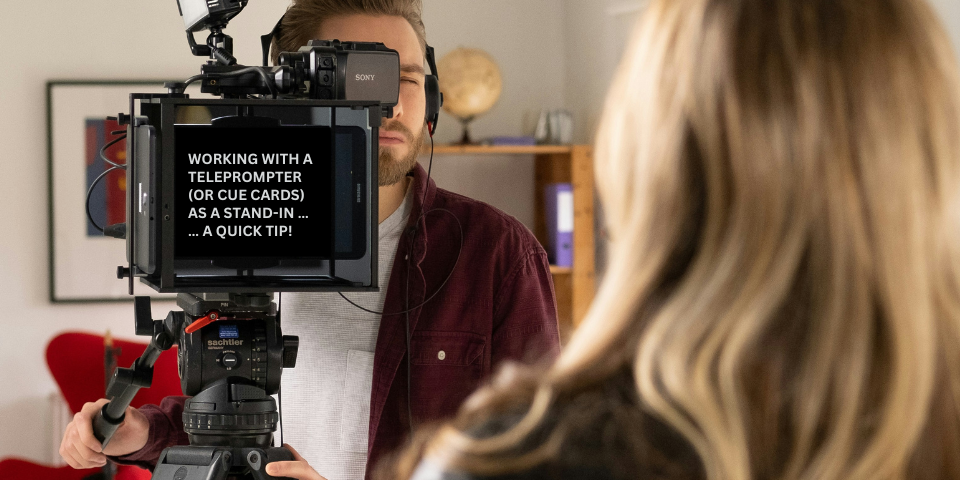On some TV or film sets, the stand-ins are asked to wear clothing that is similar in color and style to what their respective first-team actors are wearing. This clothing is referred to as “color cover.”
Color cover runs the gamut. It can be the exact coat or item the first-team actor is wearing — this is rare. Color cover can be exact copy of the actor’s wardrobe that production purchased — which is also rare.
Color cover can also be something production provides that is similar in color to what the actor is wearing in the scene — this is generally more common. This kind of color cover — all too frequently — is oversized or ill-fitting, mainly because the fit of color cover matters not as much as the general color of it. Plus, often stand-ins wear their color cover on top of the clothing they wear to set, which doesn’t make for the best presentation.
Lastly, there is what the stand-in might be asked to bring as color cover. Of course, being that this is what the stand-in brought, it is generally better fitting!
At least from my experience, in recent years, there has been a welcome shift on productions in the expectations around color cover. Namely, the shift has been around when the stand-in is expected to get color cover.
Past Color Cover Expectations
In the past — again, from my experience — stand-ins who were asked to get color cover were usually asked to get color cover from the wardrobe department or wardrobe truck before their calltime. So, if you showed up to production before your calltime, in that time before your call, you were expected to go get color cover then.
However, being that most stand-ins work on union sets, and given that getting color cover technically is work, a stand-in should not be required to get color cover on his or her own time. Instead, if the stand-in is supposed to be on set at his or her call, then any time getting color cover before that calltime should be accounted as work time.
Recent Color Cover Expectations
I have seen more recently that productions take time into account with respect to color cover. They understand that getting color cover is work time, so the issue must be addressed considering that it is work time.
Different productions seem to field the issue differently. Some will bring stand-ins in at crew call, and production will deliver color cover to the stand-ins on set.
Other productions will bring stand-ins before crew call to provide adequate time before crew call for them to go get color cover. Sometimes this means production has to bring in stand-ins a bit earlier, to then have them break for an “NDB” (non-deductible breakfast), in order to prevent the stand-ins from collecting meal penalties from having a calltime before crew.
How to Handle Getting Color Cover Before Your Calltime
If you are standing in on a set, and you are asked to get color cover, make note of the time. If you are not in yet, you technically aren’t working, so that time should not be spent getting color cover. So, if production asks you to get color cover before your call, consider asking production if you should clock in “now” in order to get color cover.
If you can tell that production would not be interested in crediting you with time getting color cover (it would not be surprising), then ask production if they would like you to get it at your calltime or if they would prefer to deliver it to you on set. Putting it in this way forces production to choose to take you off set (where you might need to be present for a rehearsal) or have other crew members provide color cover for you. In general, this would mean production delivering color cover to you, which for most stand-ins is probably a welcome thing.
Returning Color Cover and the Clock
At the end of the day, when you will need to return color cover, remember to factor that in as work time as well.
So, if you are checking out, and if you still need to return color cover, consider how much time you would need to accomplish that, and figure that into the calculation of your out time.
Also consider what you should do if you arrive at the wardrobe department or wardrobe truck and no one is there or it is locked. That kind of delay could make for meaningful work time trying to overcome the issue.
As a backup plan, ask the production person wrapping you out what you should do if no one is at the wardrobe department or truck (so that you don’t needlessly rack up additional time on the clock). That gameplan should help you in case there are any surprises when you can’t drop off your color cover.
In Conclusion
In general, remember that, as a stand-in, you are a worker doing work. If you are asked to do something related to your work, it may be worth considering whether you should be on the clock to do it. Getting color cover generally should be time spent on the clock.
How do you address color cover? Do you or do you not make sure your time spent getting color cover is credited? Share your experiences in the comments below!







When I saw the title of this post, I said “YES!” to myself. I have been successful in asking for this in the past, so I would recommend stand-ins bring it up if they are asked to pick up or return color cover while not on the clock. I agree with you Ben that productions have been getting better about making sure stand-ins are compensated for this time.
I also wanted to mention that the wardrobe department on some sets will require you to hand in your voucher in exchange for color cover, and it will be given back to you at the end of the day when you return your color cover. So you may have to check in with the background PA first upon arrival to set to get your voucher before you go to wardrobe to get color cover. And in this case, you would not be able to sign out before you return your color cover at the end of the day. This can get annoying, especially if you don’t know where the wardrobe truck / costume room is located, so you would absolutely want to make sure you are compensated for the time it takes you to do this.